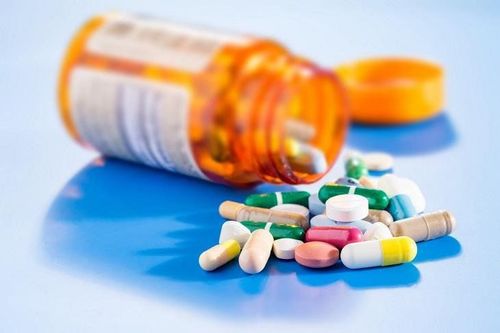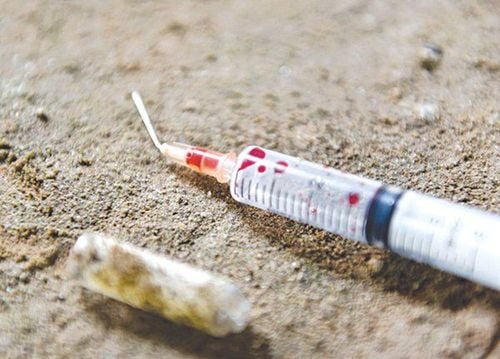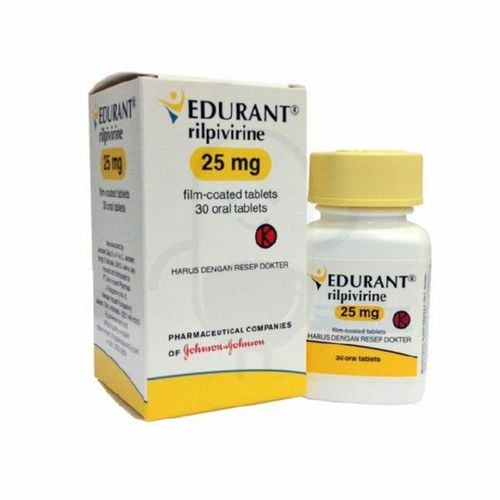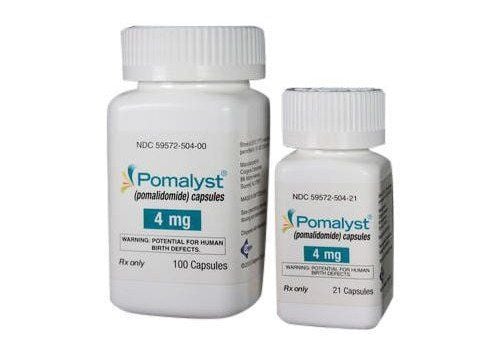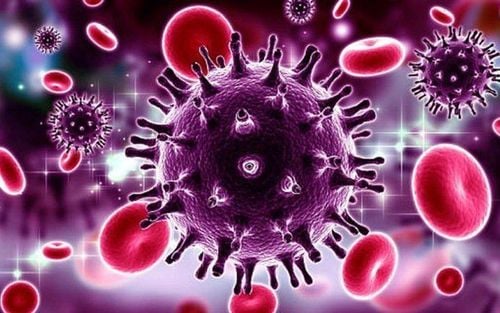This is an automatically translated article.
The article was professionally consulted with Doctor Vo Ha Bang Suong - Therapist - Department of Medical Examination & Internal Medicine - Vinmec Phu Quoc International General Hospital.HIV stands for "Human Immuno Deficiency Virus", which refers to a viral infection that attacks the immune system, causing immunodeficiency in humans. When infected with a virus, the body responds in different stages. In the acute phase, there are systemic manifestations in response to viral entry. Testing is the only way to confirm HIV status.
1. HIV transmission route
Patients with HIV are considered to be the sole source of HIV infection with no known foci of infection in animals. HIV is transmitted through 3 main routes:1.1. HIV is transmitted by blood HIV is transmitted through the blood and products of HIV patients.
Sharing needles and syringes.
Sharing needles for tattooing, eyebrow tattooing, acupuncture, razor blades,...
Sharing surgical and medical instruments that have not been properly disinfected.
Spread through instruments with blood (toothbrush)
By direct contact with the blood of an HIV patient in an open wound.
1.2. HIV is transmitted through sexual contact HIV is spread through sexual contact when bodily fluids such as blood, semen, or vaginal fluids containing HIV virus enter the body of a sexual partner.
Any form of unprotected sex with someone with HIV carries the potential to get HIV, whether anal or oral.
Unprotected sex leads to HIV infection
1.3. HIV is transmitted from mother to baby When a mother is pregnant, the HIV virus will travel from the mother's blood through the placenta and into the fetus.
When the mother gives birth, the HIV virus from the amniotic fluid or vaginal fluid enters the baby's body or the mother's blood sticks to the baby's mucous membranes.
When a mother breastfeeds, HIV can be transmitted through milk or cracks in the mother's nipples and contact with lesions in the baby's oral mucosa.
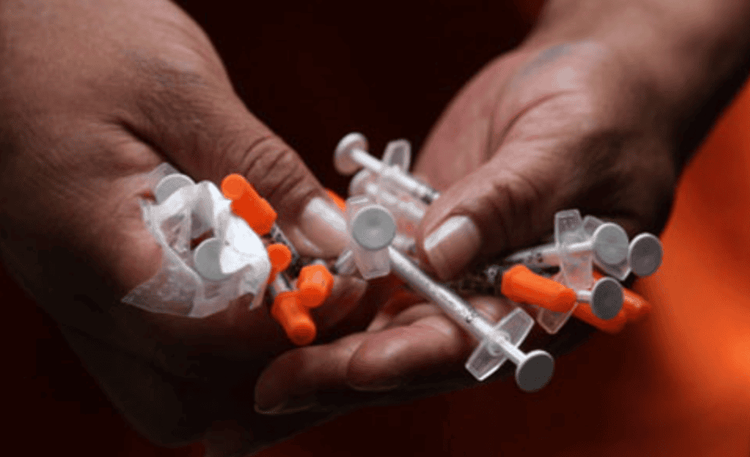
Sử dụng chung bơm tiêm là một trong những con đường lây truyền HIV
2. Symptoms of HIV acute stage
In the acute stage of HIV, the disease progresses rapidly due to the patient's weakened immune system, this is also the time when the patient is susceptible to opportunistic infections or unusual tumors.Acute HIV symptoms (about 1 month after exposure). Symptoms are primarily a systemic response to viral entry. Characterized by flu-like syndrome. Patients often ignore. Symptoms may be present.
2.1. Fever and chills The patient presents with a mild fever of 37.5 o C to 38.3 o C, and accompanied by chills. This is one of the earliest and most common HIV symptoms you can feel.
Fever can last for 1 or 2 weeks, but sometimes it only lasts for a few days.
2.2. Excessive sweating at night 2.3. Red skin rash A red skin rash with itching all over the body but sometimes it only appears in 1 or 2 places on the body.
Specific manifestation: It is an enveloping red color, not sporadic red bumps. If you've ever had a rash due to a drug reaction, it's the same.
The rash usually lasts for at least a week, and most patients say it doesn't itch; it's a response to fever along with the body's natural inflammatory response to fight infection.
2.4. Sore throat (throat pain) Sore throat, difficulty swallowing. Examination may reveal a red throat. There were no manifestations of purulent inflammation or pseudomembranous in the pharynx. The condition resembles acute pharyngitis caused by acute respiratory viruses or the condition commonly seen in cold infections.
2.5. Feeling drowsy and achy all over body Muscle aches and fatigue for at least a week after contracting HIV.
It is a constant burnout, even going to work or normal activities is exhausting.
2.6 Swollen lymph nodes in neck, armpit and groin Painful swelling of lymph nodes in neck, armpit, groin area. On palpation of many lymph nodes, many painful swollen sites are suggestive signs. When in the suggestive systemic illness, HIV testing is necessary. Swollen lymph nodes will clear up on their own within a few days, even without treatment. However, it will happen again.
2.7. Canker sores Canker sores are soft, round, concave sores on the lining of the mouth. However, it should be noted that these sores can occur for a variety of reasons, such as stress, food allergies, or hormonal changes.
2.8. Nausea and diarrhea About 30-60% of patients have signs of nausea, vomiting, diarrhea. Nausea and vomiting, which can also be early signs of HIV infection. There are also some less common symptoms in the early stages, including: Fungal infection, thrush or infection, menstrual disorders in women.
The above are just some of the senses that cannot confirm whether you are infected with HIV or not.
This is the time when the virus moves into the bloodstream and begins to multiply in large numbers. Inflammation and swelling are the response of the immune system. But not everyone with HIV develops these symptoms.
Due to the unclear nature of these symptoms in acute HIV, patients and doctors often do not recognize the signs of HIV infection but will think of having one of the common bacterial infections with similar symptoms. As a result, the patient can easily infect many people during this period.
So when acute illness is suspected based on symptoms, HIV testing is necessary. Conventional screening tests also do not identify the disease, so this period is also known as the "window" period, about 3 months.
After HIV the acute phase is the chronic phase: This is the stage where the strong defense of the immune system will reduce the number of viral particles in the blood, turning to the chronic HIV infection stage. This stage can last from 2 weeks to 20 years depending on the case.
The final stage is the AIDS stage : The final stage with the attack of all kinds of infectious agents (fungi, tuberculosis...) and the destruction of the body by tumors. Physical exhaustion and death.
3. Prevention of HIV disease
The way to prevent HIV for yourself is to understand how HIV is spread to take measures to prevent your exposure to HIV transmission routes:3.1. Sexually Transmitted HIV Infection Prevention Live healthy, faithful, monogamous and both HIV-free. Do not have promiscuous sex.
In the case of sex with an unknown person who has HIV, the best way to prevent the disease is to practice safe sex to protect yourself by using a condom. rubber properly.
Early recognition and timely treatment of sexually transmitted diseases to help reduce the risk of HIV infection, because the damage caused by a sexually transmitted infection will be the factor that HIV virus enters. .
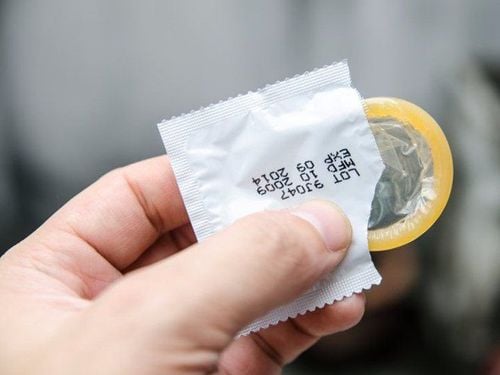
Tình dục an toàn bằng cách sử dụng bao cao su khi quan hệ
When blood transfusion is required, only blood and blood products that have been tested for HIV are accepted.
Do not share needles and syringes; sterile needles and syringes; use sterilized instruments during surgery, acupuncture...
Absolutely do not come into direct contact with body fluids of HIV-infected people.
Do not share personal items such as razors, toothbrushes,...
3.3. Prevention of mother-to-child transmission of HIV. Women who are already infected with HIV should not become pregnant because the rate of HIV transmission to their children is 30%.
If you are pregnant and want to have a baby, you need to go to a health facility for antenatal check-ups and advice on how to prevent HIV infection for your baby.
After giving birth, children should use cow's milk to replace breast milk, because breastfeeding can cause scratches and HIV transmission to the baby.
Vinmec International General Hospital offers a Package of Examination and Screening for social diseases to help customers detect diseases early and have effective treatment and prevent dangerous complications. The screening package for social diseases at Vinmec is for all ages, both men and women.
Please dial HOTLINE for more information or register for an appointment HERE. Download MyVinmec app to make appointments faster and to manage your bookings easily.




